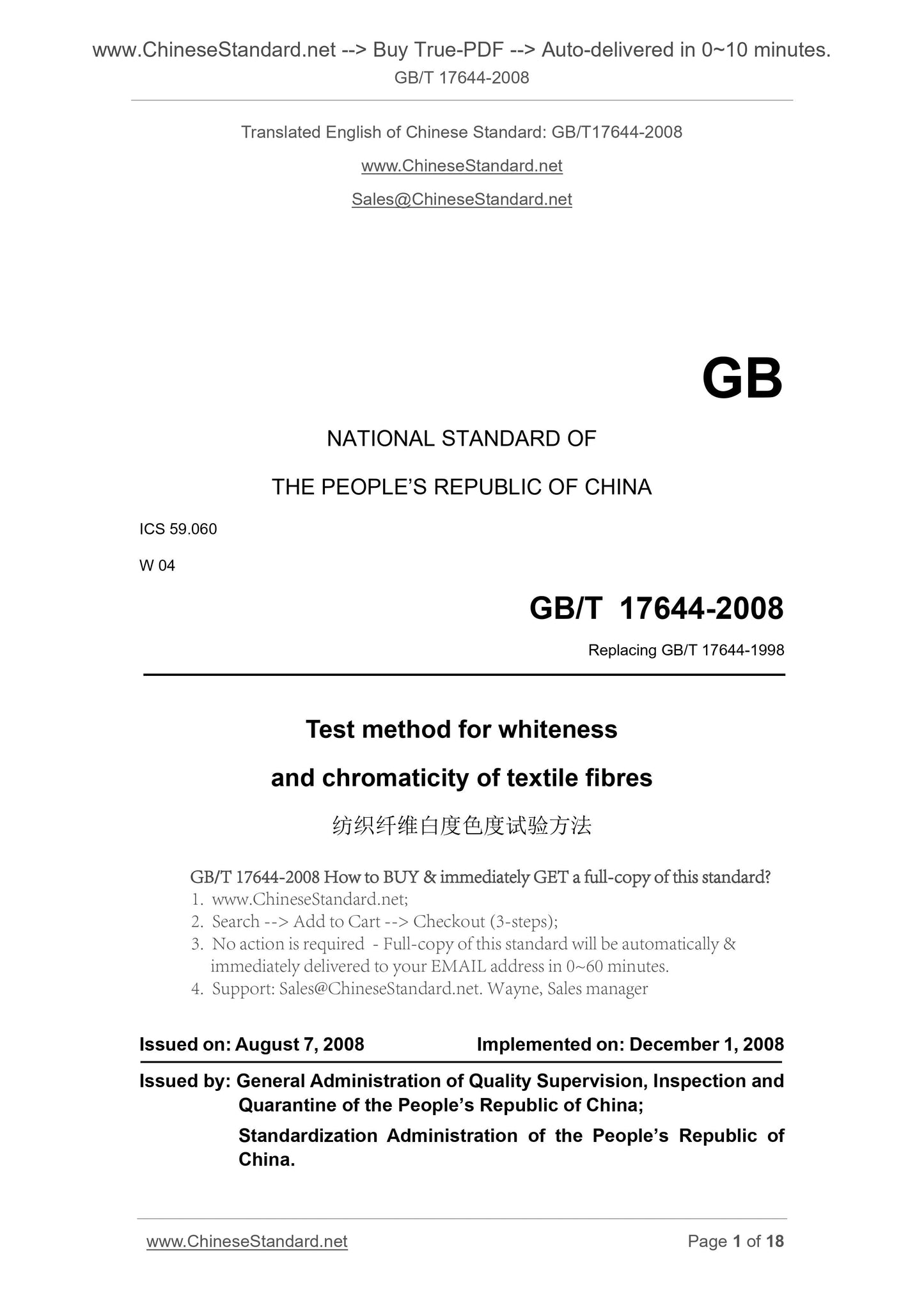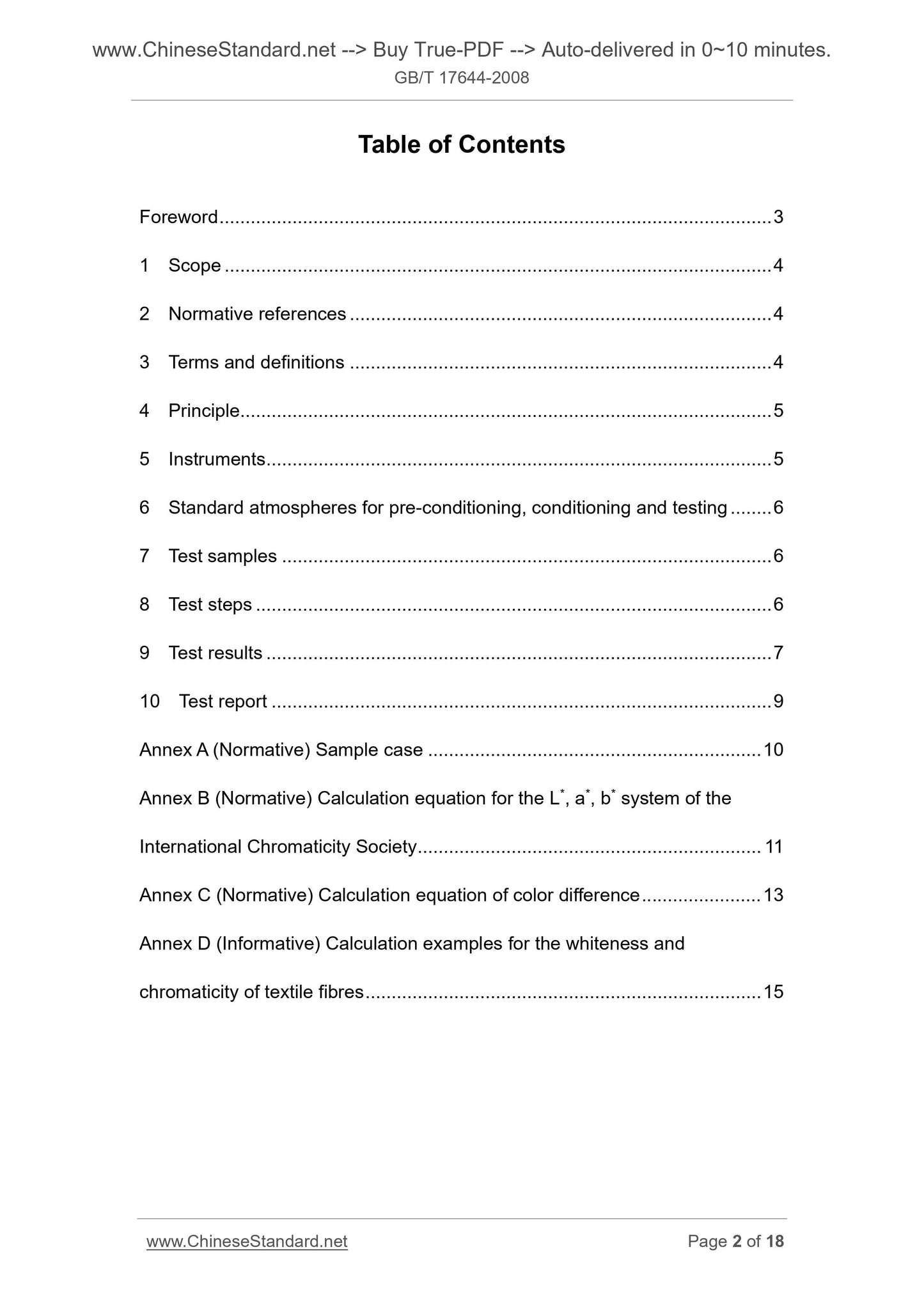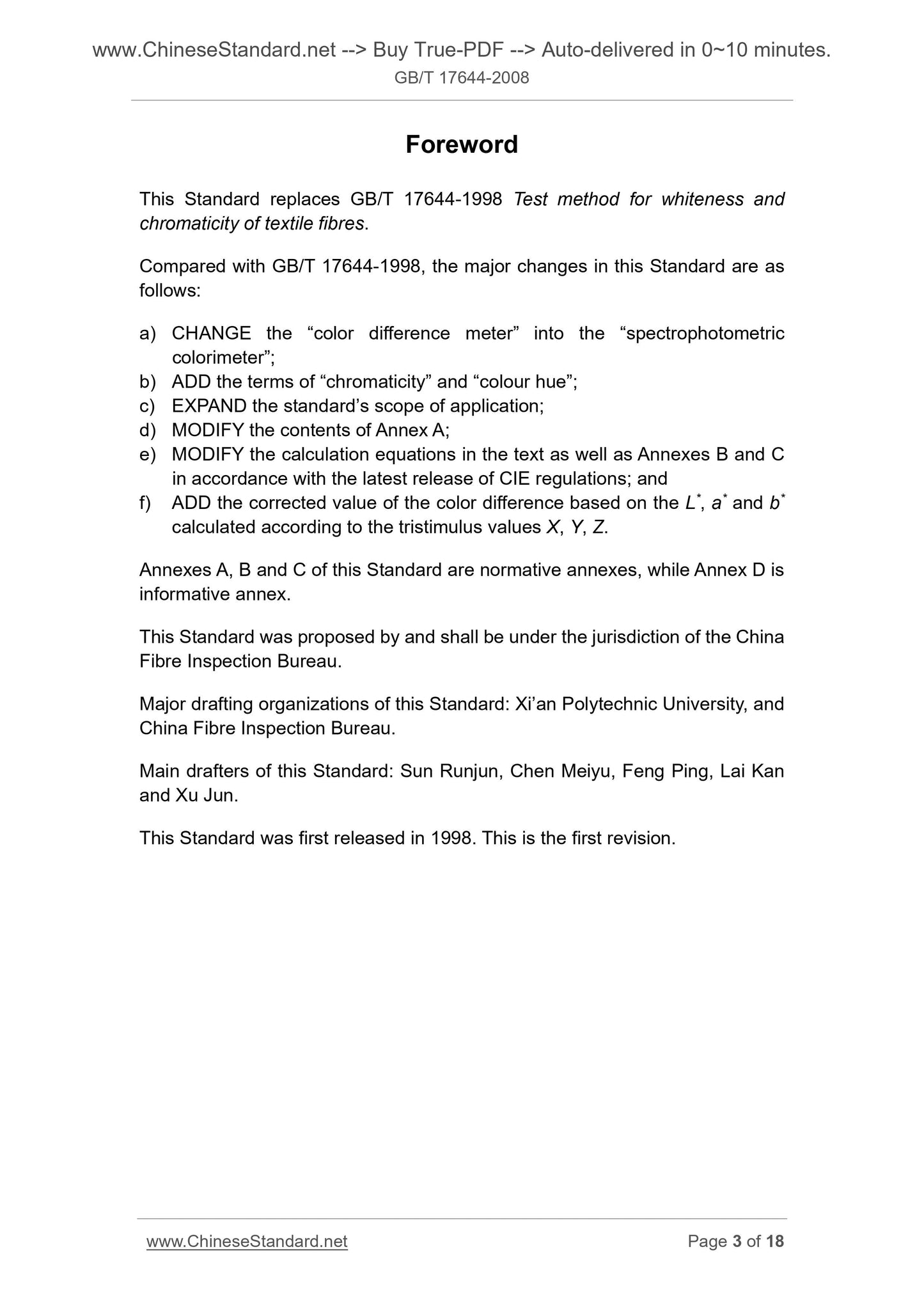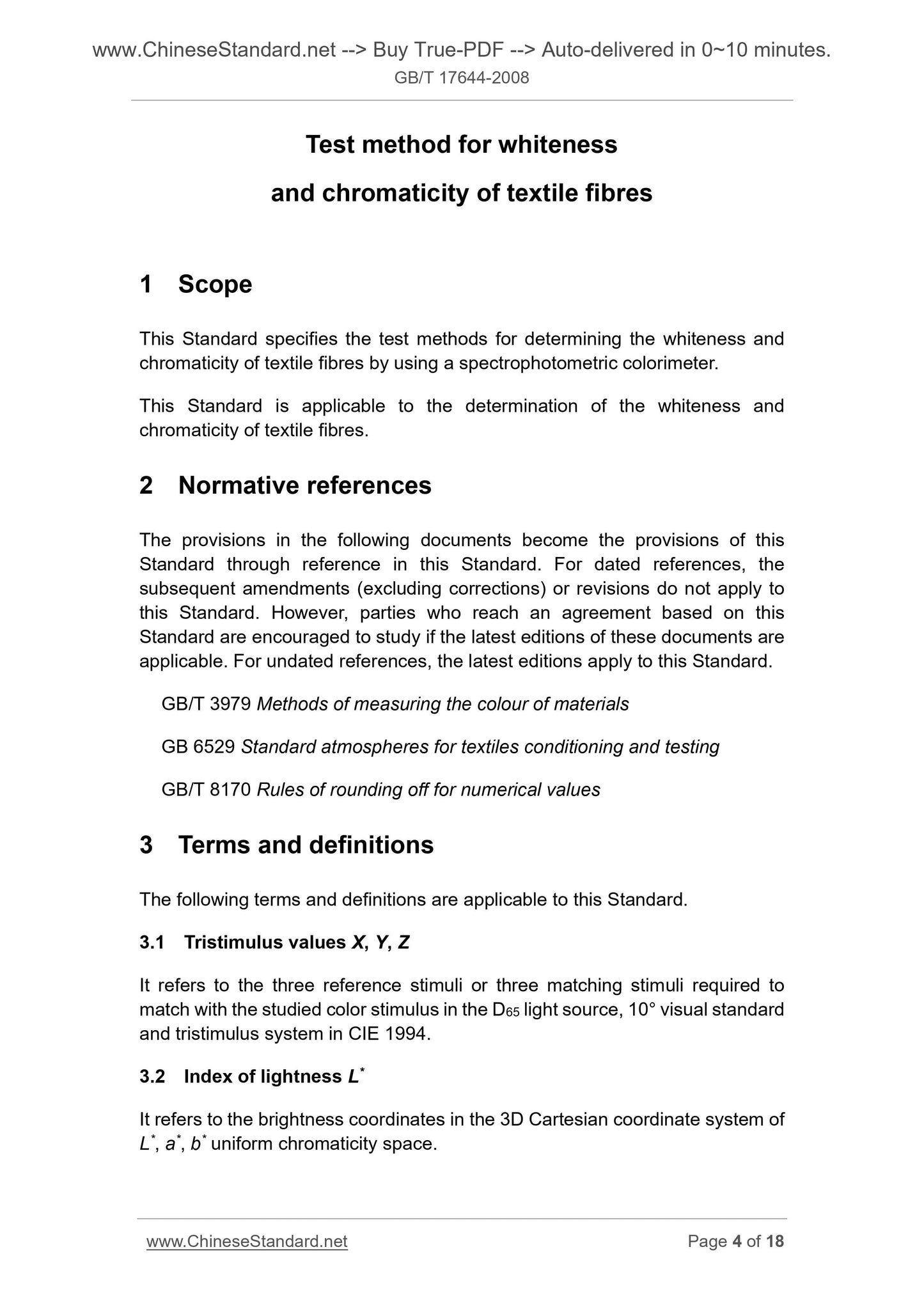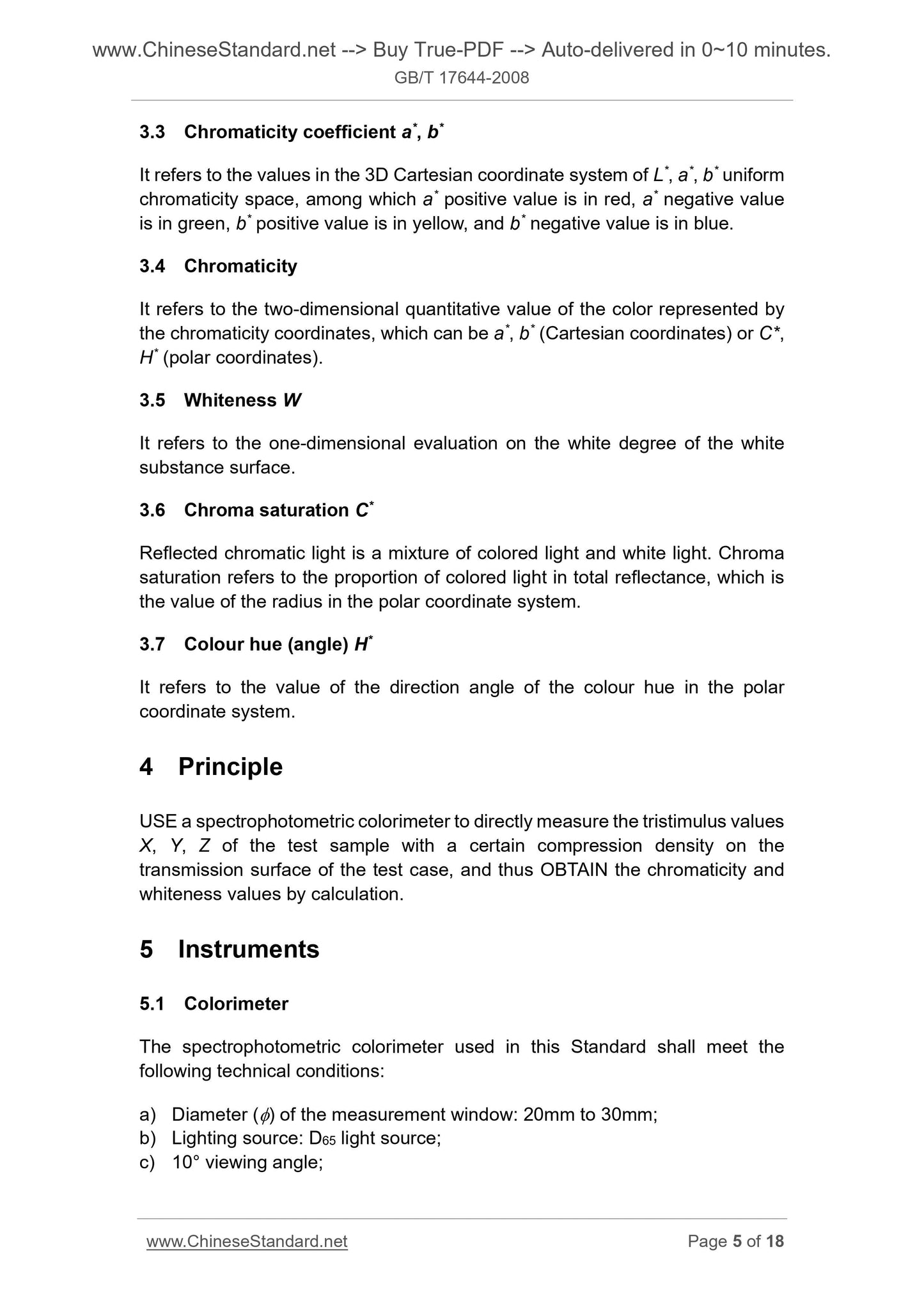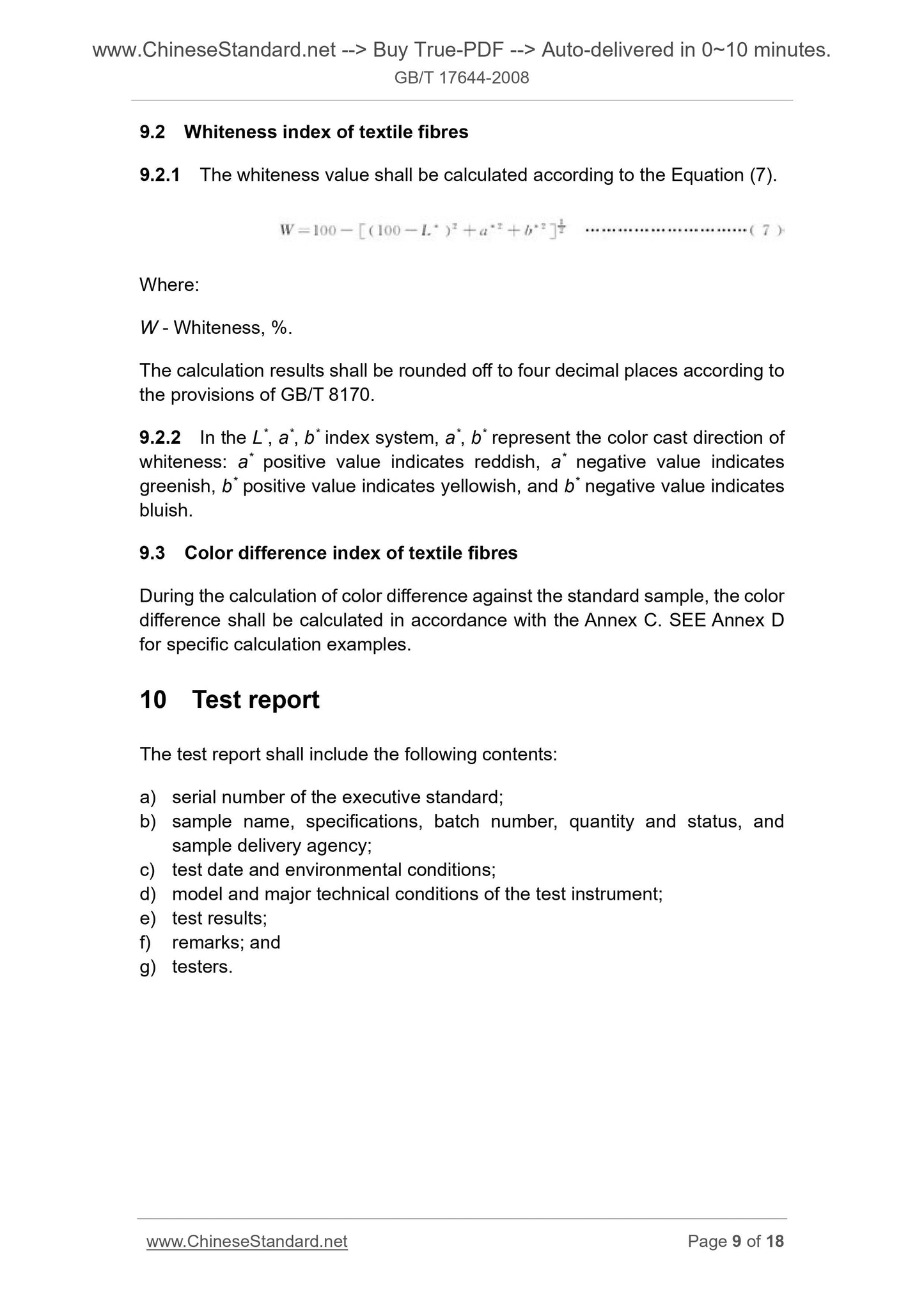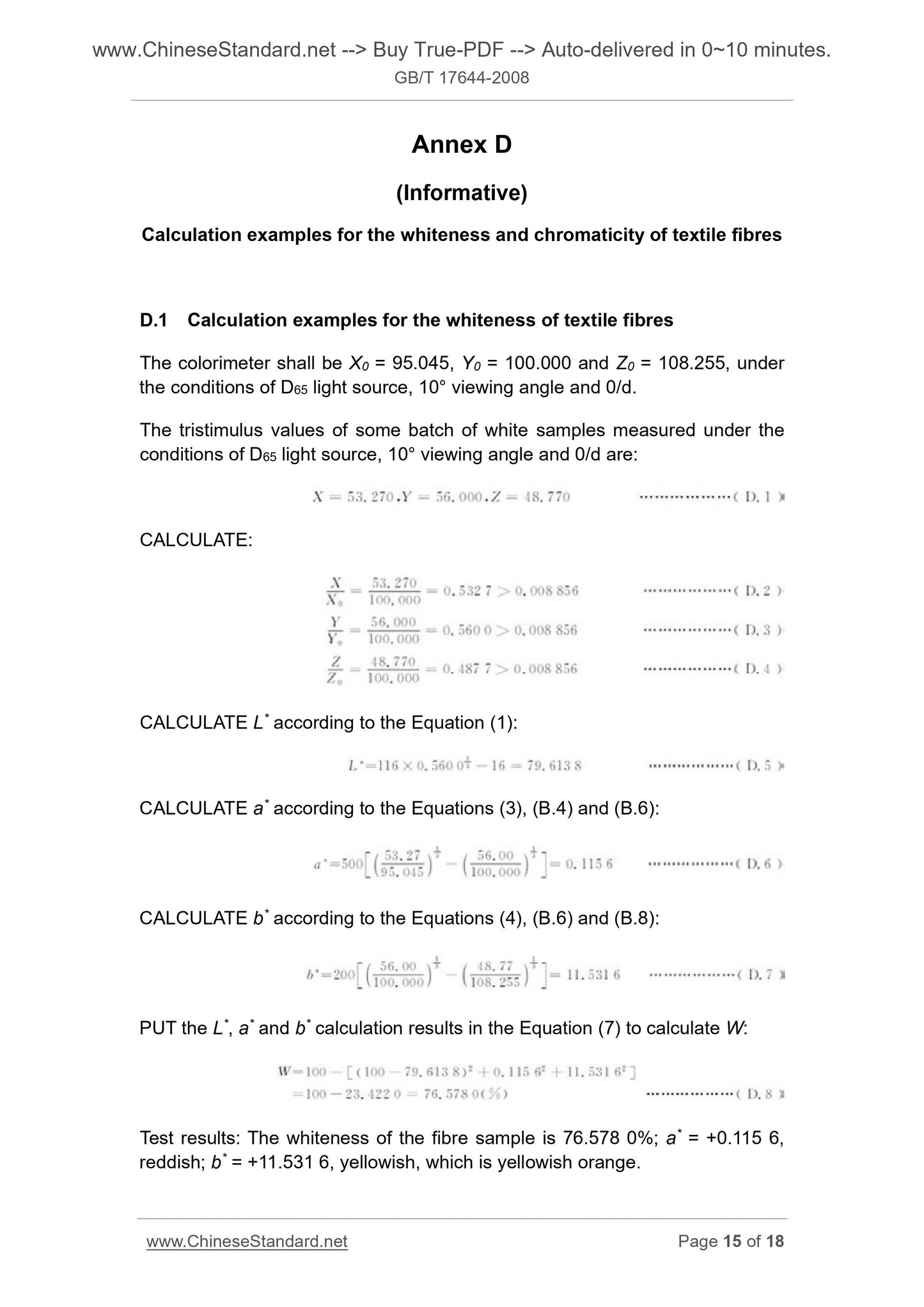1
/
of
7
www.ChineseStandard.us -- Field Test Asia Pte. Ltd.
GB/T 17644-2008 English PDF (GB/T17644-2008)
GB/T 17644-2008 English PDF (GB/T17644-2008)
Regular price
$140.00
Regular price
Sale price
$140.00
Unit price
/
per
Shipping calculated at checkout.
Couldn't load pickup availability
GB/T 17644-2008: Test method for whiteness and chromaticity of textile fibres
Delivery: 9 seconds. Download (and Email) true-PDF + Invoice.Get Quotation: Click GB/T 17644-2008 (Self-service in 1-minute)
Newer / historical versions: GB/T 17644-2008
Preview True-PDF
Scope
This Standard specifies the test methods for determining the whiteness andchromaticity of textile fibres by using a spectrophotometric colorimeter.
This Standard is applicable to the determination of the whiteness and
chromaticity of textile fibres.
Basic Data
| Standard ID | GB/T 17644-2008 (GB/T17644-2008) |
| Description (Translated English) | Test method for whiteness and chromaticity of textile fibres |
| Sector / Industry | National Standard (Recommended) |
| Classification of Chinese Standard | W04 |
| Classification of International Standard | 59.060 |
| Word Count Estimation | 13,110 |
| Date of Issue | 2008-08-07 |
| Date of Implementation | 2008-12-01 |
| Older Standard (superseded by this standard) | GB/T 17644-1998 |
| Quoted Standard | GB/T 3979; GB 6529; GB/T 8170 |
| Regulation (derived from) | National Standard Approval Announcement 2008 No.12 (Total No.125) |
| Issuing agency(ies) | General Administration of Quality Supervision, Inspection and Quarantine of the People's Republic of China, Standardization Administration of the People's Republic of China |
| Summary | This standard specifies the determination of textile fibers whiteness skin color by spectrophotometry instrument, test methods chroma. This standard applies to the determination of textile fibers whiteness and color. |
Share
